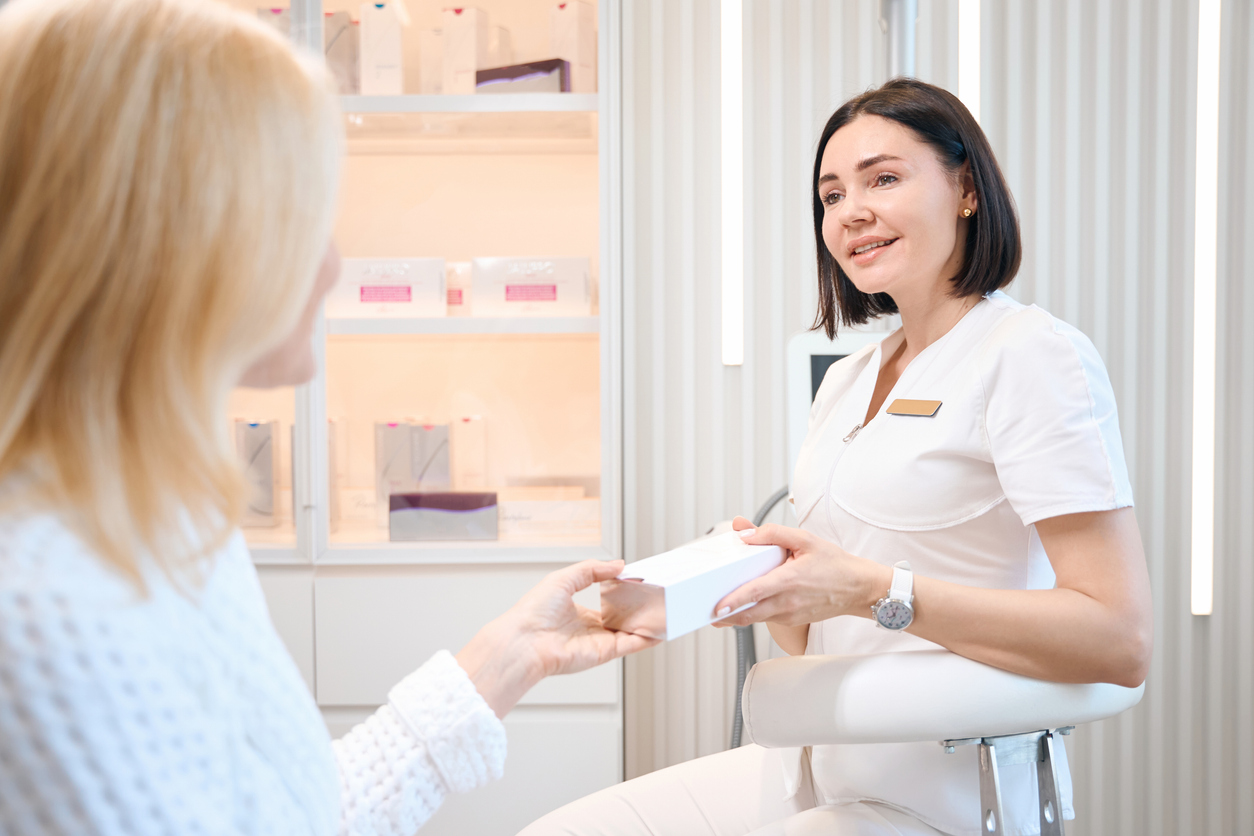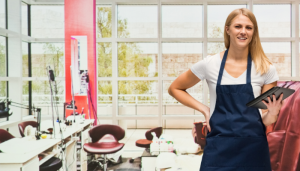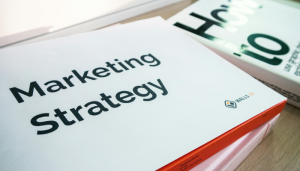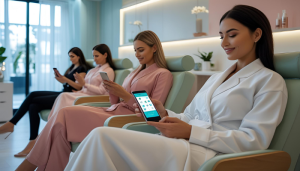What Is Aesthetics in Marketing?

Table of Contents
ToggleIn a world where consumers are bombarded with endless content, standing out isn’t just about what you say—it’s about how you present it. Aesthetics in marketing goes beyond just “looking good”—it’s about creating a visual and emotional experience that captures attention, builds brand identity, and influences customer perception.
But what exactly is aesthetics in marketing, and why does it matter so much? In this post, we’ll explore how visual appeal impacts consumer behavior, the key principles of aesthetic branding, and how businesses can use design to create a lasting impression.
Key Takeaways
Aesthetics influence how customers perceive and interact with a brand.
Visual appeal can significantly impact consumer behaviour and purchasing decisions.
Strong aesthetics help establish a unique brand identity and differentiate from competitors.
Creating an enjoyable aesthetic experience enhances customer journeys and satisfaction.
Future trends in aesthetics include personalisation and sustainability in design.
Understanding Aesthetics in Marketing
Defining Aesthetics
So, what exactly is aesthetics when we’re talking about marketing? It’s more than just making things look pretty. It’s about how your brand engages the senses and evokes feelings. Think of it as the art of creating a pleasing and memorable experience for your audience.
It’s about the details, the choices you make in design, and how they all come together to form a cohesive and attractive whole. It’s not just about visual appeal, but also about how things sound, feel, and even smell (if applicable!).
The Role of Visual Appeal
Visual appeal is a big part of aesthetics, obviously. It’s often the first thing people notice about your brand. Think about your website, your logo, your packaging – all these things contribute to the overall visual impression. A well-designed visual identity can grab attention, communicate your brand values, and set you apart from the competition.
But it’s not just about looking good; it’s about looking right for your target audience. What appeals to one group might not appeal to another, so it’s important to know your audience and tailor your visuals accordingly.
Emotional Connection Through Design
Aesthetics isn’t just about surface-level appeal; it’s about creating an emotional connection with your audience. Design choices can evoke feelings of trust, excitement, comfort, or even nostalgia. Think about the colours you use, the fonts you choose, and the images you display – all these elements can influence how people feel about your brand.
By carefully considering these factors, you can create a design that resonates with your target audience on a deeper level, building brand loyalty and driving sales. It’s about making people feel something when they interact with your brand.
The Importance of Aesthetic Appeal
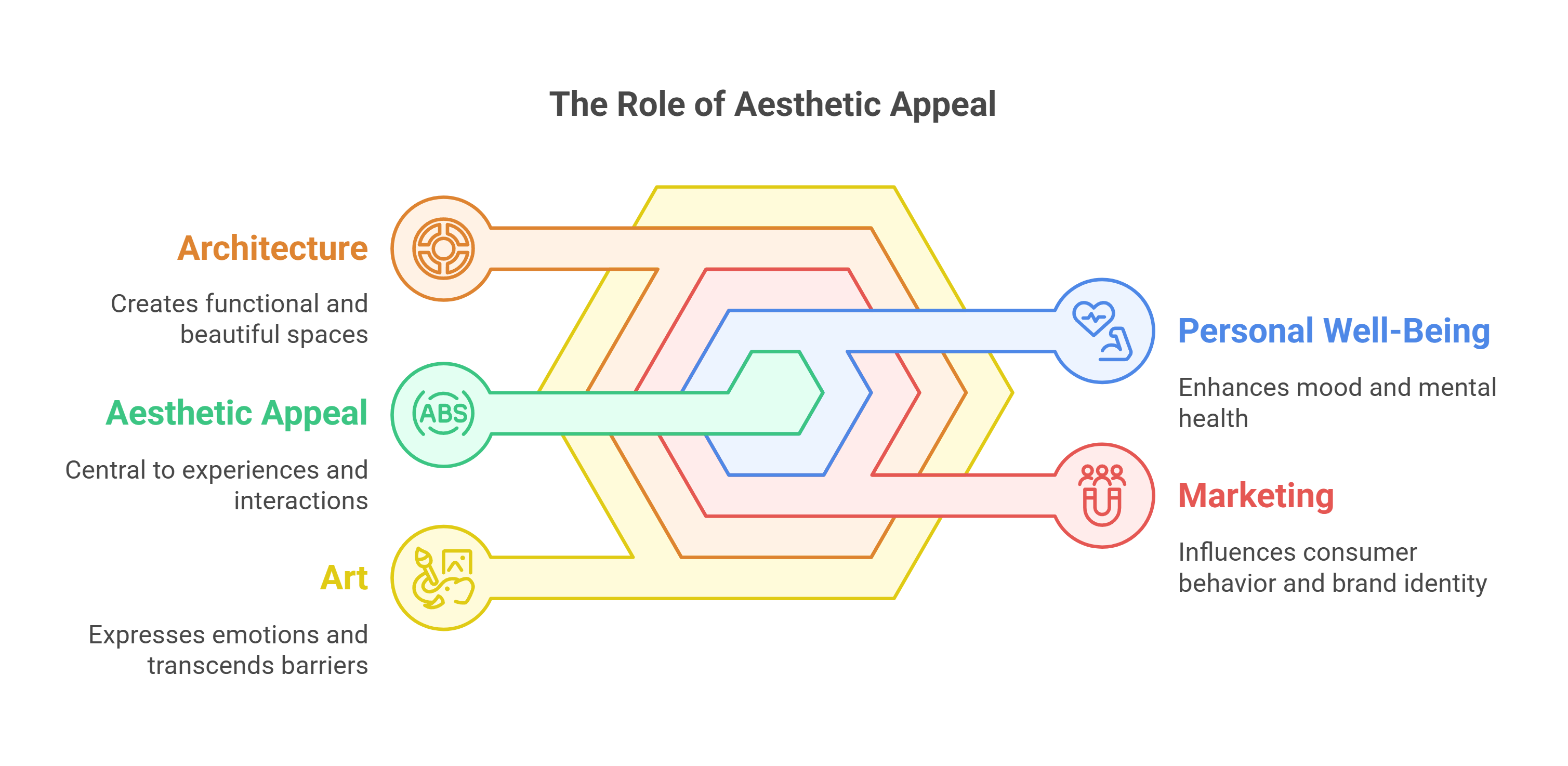
Why should you even bother with aesthetics? Well, it’s about making your business work better. Think of it as an investment, not an expense. Let’s break down why it matters.
Influencing Consumer Behaviour
Aesthetics can really sway what people decide to buy. It’s like this: if something looks good, people automatically assume it is good. It’s a shortcut our brains take.
So, a well-designed product or advert can grab attention and make someone more likely to choose you over the competition. It’s not just about the product itself; it’s about the whole package.
Building Brand Identity
Your brand’s look and feel is a big part of what makes you, well, you. Consistent aesthetics across your website, social media, and products helps people recognise your brand instantly. Think of brands like Apple or Coca-Cola – you know their style right away. That recognition builds trust and loyalty.
Differentiating from Competitors
In a crowded market, Aesthetics can be a major differentiator. If everyone else is using the same old boring designs, a fresh and appealing aesthetic can make you the one people remember. It’s about showing you’re different, you care about quality, and you’re willing to go the extra mile.
Key Principles of Aesthetic Marketing
Visual Hierarchy
Okay, so visual hierarchy is a fancy way of saying you need to guide the viewer’s eye. Think of it like this: what do you want them to see first, second, and last? It’s not just about making things look pretty; it’s about making them look effective. You can use size, colour, contrast, and placement to achieve this. For example, a big, bold headline will grab attention first, followed by a supporting image, and then the body text. It’s all about creating a smooth, intuitive experience.
Colour Psychology
Ever wondered why some brands use blue and others use red? It’s not random! Colours evoke emotions and associations. Blue often represents trust and stability, while red can signify excitement or urgency.
Understanding colour psychology can seriously boost your marketing game. Think about your target audience and the message you want to send. Choose colours that align with those goals. It’s a subtle but powerful way to influence how people perceive your brand.
Typography and Readability
Don’t underestimate the power of good typography! It’s not just about picking a font you like; it’s about choosing fonts that are easy to read and that reflect your brand’s personality. A sleek, modern font might work well for a tech company, but it would feel out of place for a traditional bakery.
Here are some things to keep in mind:
Font Choice: Select fonts that align with your brand’s personality and are easy on the eyes.
Font Size: Ensure your font size is appropriate for all devices. No one wants to squint to read your content.
Line Height and Spacing: Proper line height and spacing can significantly improve readability. Give your text room to breathe!
Typography is more than just making words look pretty; it’s about making them accessible and engaging. It’s a key element in creating a positive user experience and reinforcing your brand’s identity.
Creating an Aesthetic Experience
Okay, so you’ve got the basics down – you know what aesthetics are and why they matter. But how do you actually make it happen? How do you turn abstract ideas about beauty into something real that customers can experience?
Designing Customer Journeys
Think of the customer journey as a story. What happens when someone first hears about your brand? What do they see when they visit your website? What’s the vibe when they walk through your door? Every touchpoint is a chance to create an aesthetic impression.
Map out each step and think about how you can make it more visually pleasing, engaging, and consistent with your brand’s overall aesthetic. It’s not just about making things look pretty; it’s about creating a cohesive and memorable experience.
Integrating Sensory Elements
Aesthetics isn’t just about sight. Think about all the senses! What does your shop smell like? What kind of music is playing? Are the chairs comfy? These things add up. A carefully chosen scent can evoke a feeling of calm, while the right music can set an upbeat mood. Don’t underestimate the power of sensory details to create a richer, more immersive aesthetic experience.
Enhancing User Experience
User experience (UX) is a big deal. A beautiful website is useless if it’s hard to use. Make sure your website is easy to navigate, your forms are simple to fill out, and your checkout process is smooth.
The same goes for your physical space. Is it easy for customers to find what they need? Is the layout intuitive? A good UX makes the aesthetic experience even better. If people are frustrated, they won’t notice how pretty everything is.
Think about the last time you had a really great experience with a brand. What made it so good? Chances are, it wasn’t just one thing, but a combination of factors that all worked together to create a positive and memorable impression. That’s what you’re aiming for with aesthetic marketing.
Aesthetics and Brand Loyalty
Okay, so you’ve got a great-looking brand. But does it actually make people loyal? That’s the real question, isn’t it? It’s not just about pretty colours and a fancy logo; it’s about creating a connection that keeps customers coming back. Let’s have a look at how aesthetics plays a big part in that.
Establishing Trust Through Design
Think about it: dodgy-looking website, are you going to trust it with your credit card details? Probably not. A well-designed brand communicates professionalism and reliability. It tells people you care about the details, and that extends to how you’ll treat them as customers. It’s like showing up to a meeting in a smart suit – it’s all about making a good first impression and building confidence.
Creating Memorable Impressions
Ever walked into a shop and just felt… good? That’s aesthetics at work. It’s about creating an experience that sticks with people, so they remember you. It could be the layout of your store, the packaging of your products, or even the way your staff are presented.
Here’s a few ideas:
Unique colour schemes
Memorable taglines
Consistent branding across all platforms
Fostering Emotional Engagement
Aesthetics is also about feelings. Does your brand make people feel happy, excited, or calm? The colours, fonts, and images you use all contribute to the emotional impact of your brand.
If you can tap into the right emotions, you’re much more likely to create a loyal customer base. It’s about making people feel like they’re part of something special, something that resonates with their values and aspirations.
Think of Apple. Their minimalist design isn’t just about looking sleek; it’s about creating a feeling of simplicity and innovation. That emotional connection is a big part of why people are so loyal to the brand.
Measuring Aesthetic Impact
Okay, so you’ve put all this effort into making things look amazing. But how do you actually know if it’s working? It’s not just about whether you like it, but whether your audience does, and if it’s actually helping your business. Let’s look at some ways to measure the impact of aesthetics.
Analytics and Consumer Feedback
First up, data. Analytics can tell you a lot about how people are interacting with your visually-driven marketing. Are people spending more time on pages with a particular design? Are click-through rates higher on certain ads?
These are all clues. But don’t forget the human element. Consumer feedback, through surveys, reviews, and even social media comments, can give you direct insights into how your aesthetics are being received. It’s a mix of hard numbers and real opinions.
A/B Testing for Aesthetic Choices
A/B testing is your friend. Try out different versions of your website, ads, or even product packaging to see which performs best. For example:
Test different colour schemes on your website landing page.
Compare two versions of an Instagram ad, each with a different visual style.
See which product packaging design leads to more sales in a shop.
It’s a simple way to get concrete data on what aesthetic choices are most effective. You might be surprised by the results!
Long-term Brand Value
Finally, think about the long game. Aesthetics aren’t just about short-term sales; they’re about building brand value. A consistent, appealing aesthetic can help create a strong brand identity, which leads to customer loyalty and positive word-of-mouth. It’s harder to measure directly, but things like brand recognition surveys and customer retention rates can give you an idea of how your aesthetic is contributing to your brand’s overall success.
It’s important to remember that measuring aesthetic impact isn’t an exact science. It’s a combination of data analysis, customer feedback, and a bit of intuition. But by using these methods, you can get a much clearer picture of whether your aesthetic investments are paying off.
Future Trends in Aesthetic Marketing
The Rise of Personalisation
Think beyond just sticking someone’s name in an email. We’re talking about using AI to predict what treatments a client might want before they even know it themselves. Creepy? Maybe a little. Effective? Absolutely. Imagine a system that analyses a client’s skin type, lifestyle, and even their social media activity to suggest tailored treatments and products.
That’s where things are heading. It’s all about making each customer feel like they’re getting a service designed just for them.
Sustainability in Design
Sustainability is becoming a big deal, and it’s not just a fad. People actually care about this stuff. Brands that can show they’re eco-conscious are going to win big points. This means using sustainable materials in packaging, reducing waste in clinics, and even promoting treatments that are less harmful to the environment. It’s about aligning your brand with values that people genuinely believe in.
Here’s a quick look at some sustainable practises:
Eco-friendly packaging
Reducing single-use plastics
Partnering with ethical suppliers
Technological Innovations
Augmented reality (AR) and virtual reality (VR) are going to play a bigger role. Imagine clients being able to ‘try on’ different treatments using an AR app before committing. Or using VR to create a relaxing and immersive experience during a procedure.
These technologies aren’t just gimmicks; they can genuinely improve the customer experience and help people make more informed decisions. It’s all about making the process more engaging and less intimidating.
The future of aesthetic marketing is all about blending technology with a human touch. It’s about using data to create more personalised experiences, embracing sustainability to appeal to a growing eco-conscious audience, and leveraging new technologies to make the entire process more engaging and effective.
Conclusion
The brands that win aren’t just selling products; they’re selling experiences, emotions, and identities through stunning visuals and intentional design. Aesthetics shape how we perceive, trust, and engage with brands.
So, the question isn’t whether aesthetics matter—it’s how well you’re using them. Are your visuals working for you or against you? Is your brand unforgettable or just another scroll in the endless feed? Now’s the time to take control, refine your aesthetic strategy, and turn heads for all the right reasons.
Frequently Asked Questions
What does aesthetics mean in marketing?
Aesthetics in marketing refers to how things look and feel in a business. It includes product design, brand image, and how customers experience a brand.
Why is visual appeal important in marketing?
Visual appeal is important because it attracts customers and makes them more likely to buy a product. Good design can create a positive first impression.
How does design create an emotional connection with customers?
Design can create feelings and memories. When customers see something beautiful or appealing, they may feel happier or more excited about the brand.
What are some key principles of aesthetic marketing?
Key principles include visual hierarchy, which shows what is most important, colour psychology, which studies how colours affect feelings, and typography, which is about how text looks and is easy to read.
How can aesthetics affect brand loyalty?
Aesthetics can build trust and make a brand memorable. When customers enjoy the look and feel of a brand, they are more likely to return.
What future trends should we expect in aesthetic marketing?
Future trends may include more personalised designs, a focus on sustainable materials, and the use of new technologies to enhance visual experiences.


